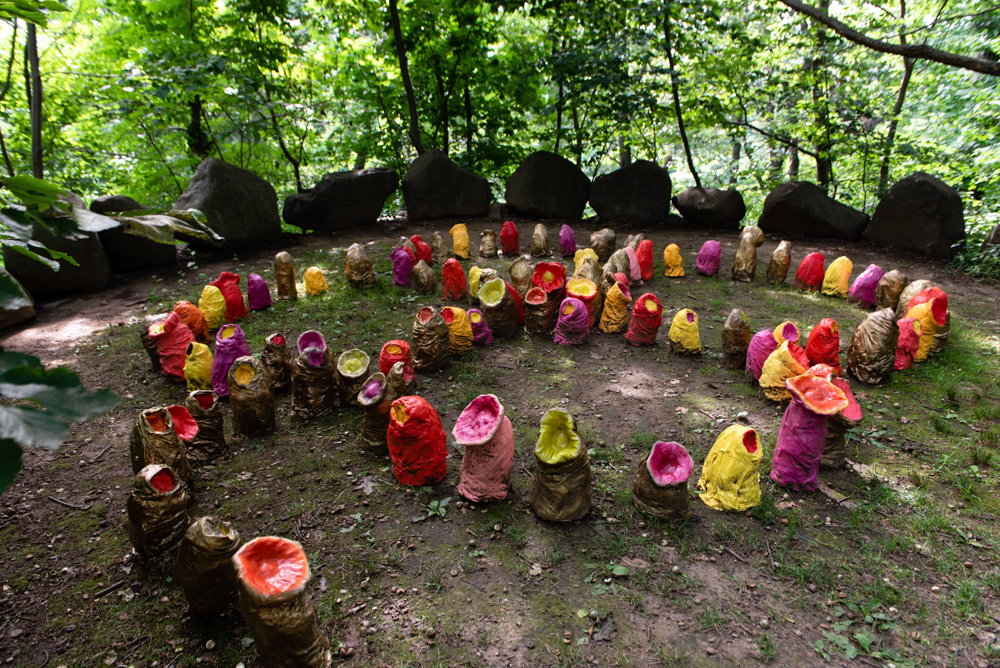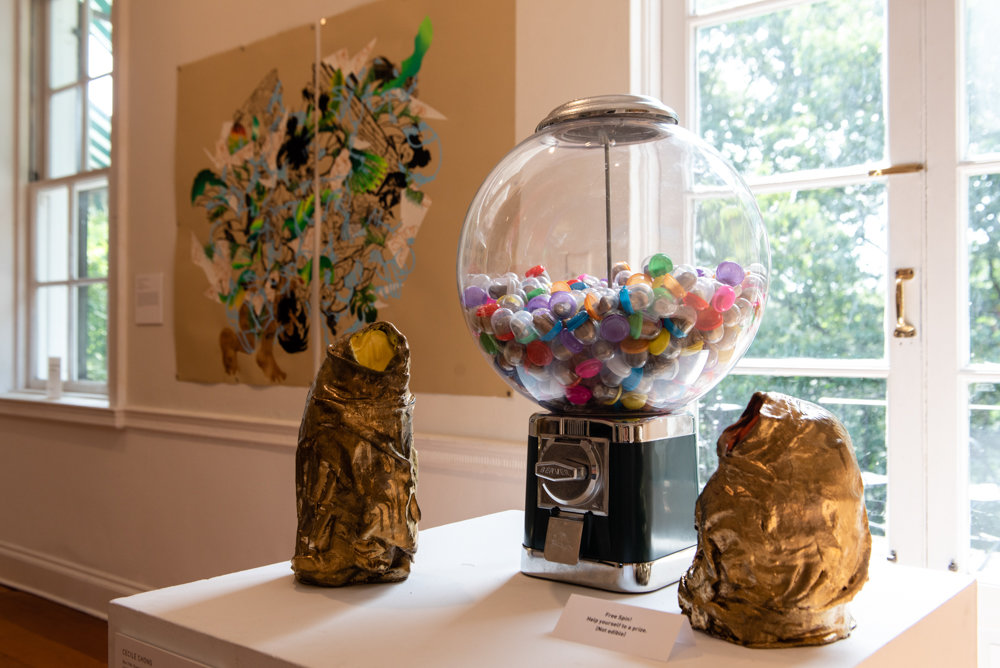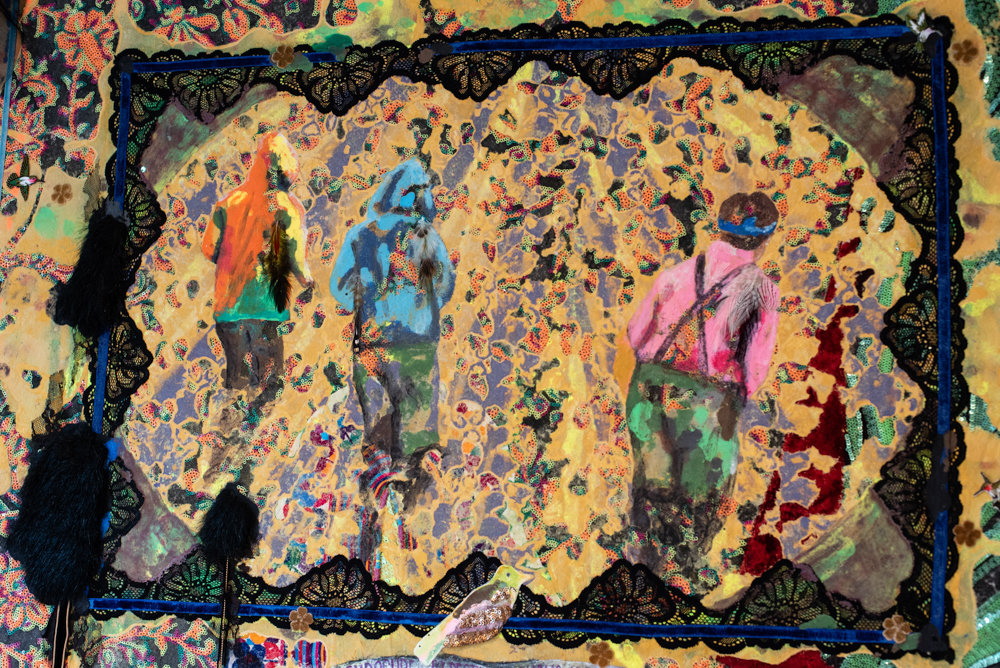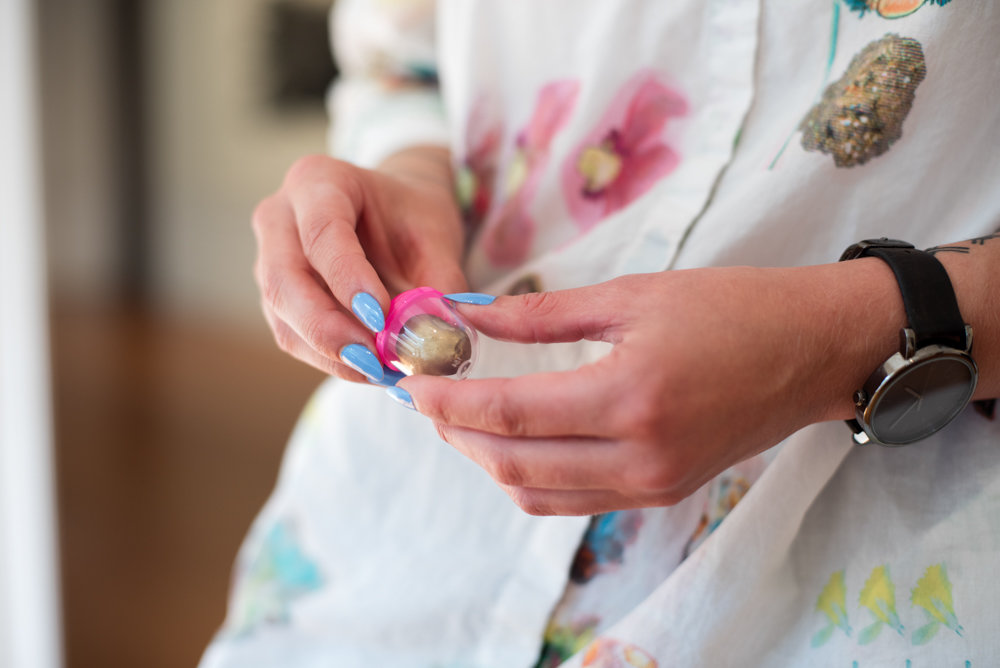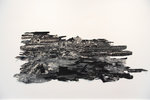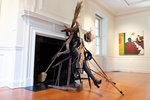Fighting floral stereotypes
Stop by Wave Hill’s Glyndor Gallery these days and you might just leave with a free sculpture. A miniature sculpture, that is.
One of the first things a visitor sees when they step into the gardens’ art gallery is what looks like a gumball machine, the kind that used to exist in grocery stories. But in the Glyndor Gallery world, it’s an art installation from Cecile Chong as part of “El Dorado-The New Forty-Niners,” an interactive art series that pays tribute to 49 percent of New York City households that speak another language besides English.
A visitor can turn the lever on Chong’s machine and receive a miniature sculpture similar to the ones on display next to it and outside on the grounds behind the gallery.
Chong is one of 23 artists featured in “Figuring the Floral,” an exhibition that explores how floral imagery is more than decorative art and a symbol of femininity. Each artist breaks that stereotypical idea by looking at the concept of flowers through the lens of gender, sexual orientation, ethnicity, race and class. It’s on display at Wave Hill through Dec. 1.
Glyndor Gallery curator Eileen Jeng Lynch, and Emily Alesandrini, a curatorial fellow at the gallery, worked with the rest of their team to develop a list of artists who could take part in the exhibition after noticing that many of them touched on these concepts of floral imagery already. The list grew so long they were also able to get other artists with no prior work with flowers on board to create something for the exhibition.
“Floral imagery sometimes, in a decorative sense, is just seen as nothing beyond face value,” Jeng Lynch said. “But the artists in this gallery space in the show (are) really unpacking important issues both personal, but also dealing with either the current political climate or global issues, (and) makes you think about things in a different way.”
Each section of the gallery focuses on a different theme. One takes a look at social history, memory and fantasy featuring work like that of artist Saya Woolfalk, who interprets human relationships to nature through that fantastical lens.
Another part of the exhibition — where Chong’s work is on display — explores immigration and migration, a topic fitting for America’s ongoing discussion and debate.
“Given the current political climate, it’s just what artists are thinking about — not necessarily because of what’s going on — but their work in general,” Jeng Lynch said, “just drawing that to the forefront.”
The final section of “Figuring the Floral” is all about gender identity. Femininity itself is questioned throughout this section of Glyndor Gallery with work from artists like Valery Hegarty’s “Childhood Home: Mom’s Bedroom Wallpaper,” which shows the passing of time with an eroding wallpaper inspired by Hegarty’s mother’s room, and an accompanying sculpture of a wilting flower.
It’s also a chance to challenge gender itself. Artist Max Colby, who identifies as non-binary — a gender identity where someone does not explicitly identify as a man or woman and goes by they/them pronouns — was only recently discovered when they submitted their art to Wave Hill’s general opportunities portal on the gardens’ website.
Colby’s work plays with textiles and domestic objects from the 1950s through the 1970s, with the addition of all sorts of items like plastic beads and sequins. This excited the curatorial team so much that they were able to secure a spot in “Figuring the Floral.”
Alesandrini sees Colby’s work as a fitting addition to the overall message “Figuring the Floral” is working to convey to viewers.
“Yes there is the stereotypical floral imagery,” Alesandrini said, “but they are utilizing it as a means of celebrating a broader definition of gender.”
She also added that it’s been fun to see how people react to each piece in Colby’s collection.
“They’re like candy,” Alesandrini said. “You want to touch them. You want to pick them up.”
Looking at the show overall, Alesandrini said it’s been great to give tours to visitors because they’re able to touch on a variety of topics with so many artists on display.
“We sort of invite viewers to prompt us in our discussions on public tours,” she said. “We ask what they’re drawn to, and conversations evolve from there as opposed to trying to give the same tour all of the time.”
People seem to easily grasp what the exhibition is trying to accomplish, according to Jeng Lynch.
“I think people think even though it’s a diverse group of artists, they think of it as a cohesive theme,” Jeng Lynch said. “And so there’s been really positive commentary on the show.”
When the two curators reflect on building “Figuring the Floral,” Jeng Lynch can see how much she’s still learning from the artists each day.
“I think each work has so many layers that the more you think about it — even though we wrote the labels — there’s always so much more that you can say about each of the works,” she said.
Meanwhile, Alesandrini was grateful to have been able to watch artists who had never featured floral imagery in their work do it for the first time.
“It’s been particularly fascinating to see those objects evolve as the artists are responding to the grounds and to their fellow artists in the show,” she said. “And that created an exciting surprise not just for the public, but for the curatorial team because we weren’t absolutely positive what would come about from those new ideas to create new work for the show.”
And as people keep stopping by Glyndor Gallery through the rest of the year, Jeng Lynch wants visitors to leave thinking about flowers a little bit differently than they did when they walked in.
I’m “hoping that they’ll see as we express floral imagery just beyond the decorative, beyond what you see in the everyday how there’s (multiple) layers you can unpack from just a beautiful flower,” she said.

